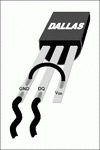cubanflyer
Full Member level 5
Hi
I am looking at using multiple 18s20 devices in a monitoring unit, I was thinking of using parastic power for the device.
Has any one used this mode?
Is so make what is the max cable distance used ?
What number of devices?
Thanks
I am looking at using multiple 18s20 devices in a monitoring unit, I was thinking of using parastic power for the device.
Has any one used this mode?
Is so make what is the max cable distance used ?
What number of devices?
Thanks
